Do you know where you can go hunting in Montana? With sprawling landscapes dotted with mountains, forests, and plains, “The Treasure State” is a hunter’s paradise, hosting an abundance of wildlife and captivating hunting experiences.
First, can you hunt on Montana state land? The answer is yes, and this diverse land offers plentiful opportunities for outdoor recreationists. Whether it’s the public state lands managed by the Montana Fish, Wildlife & Parks, the Department of Natural Resources and Conservation, or the private hunting havens, Montana beckons with an unparalleled range of options for every kind of hunter.
In this comprehensive guide, we’ll be delving into the public and private hunting scene of Montana. If you’re an outdoor enthusiast, an admirer of the stunning state, or someone planning a hunting trip, this guide to hunting in the state will be an invaluable resource for you.
- Related article: Montana Hunting Trips
So if you’re prepping for a trip to Big Sky Country and need a well-rounded guide on hunting across territories both vast and appropriately private, we invite you to journey through this article. Whether you’re a seasoned hunter or someone yearning to begin their hunting tale in Montana, there’s much to unveil and learn.
7 Key Takeaways on Montana State Land Hunting
- Montana offers 30 million acres of public hunting land, primarily managed by the U.S. Forest Service and BLM.
- Legally accessible state land refers to land that can be reached through dedicated public roads open for use by the general public, as mandated by either state or federal law.
- The Block Management Program offers curated hunting experiences on private lands, often extending to neighboring public lands.
- Establishing good relationships with landowners is key to securing permissions on private property for hunting.
- Some state parks in Montana permit hunting, but it’s essential to be aware of specific regulations for each park.
- Federal lands, including national forests and wildlife management areas, present vast and exceptional hunting opportunities.
- Each region in Montana offers unique hunting opportunities, and it’s important to acquire regional knowledge for successful hunts.
Montana Public Land Hunting
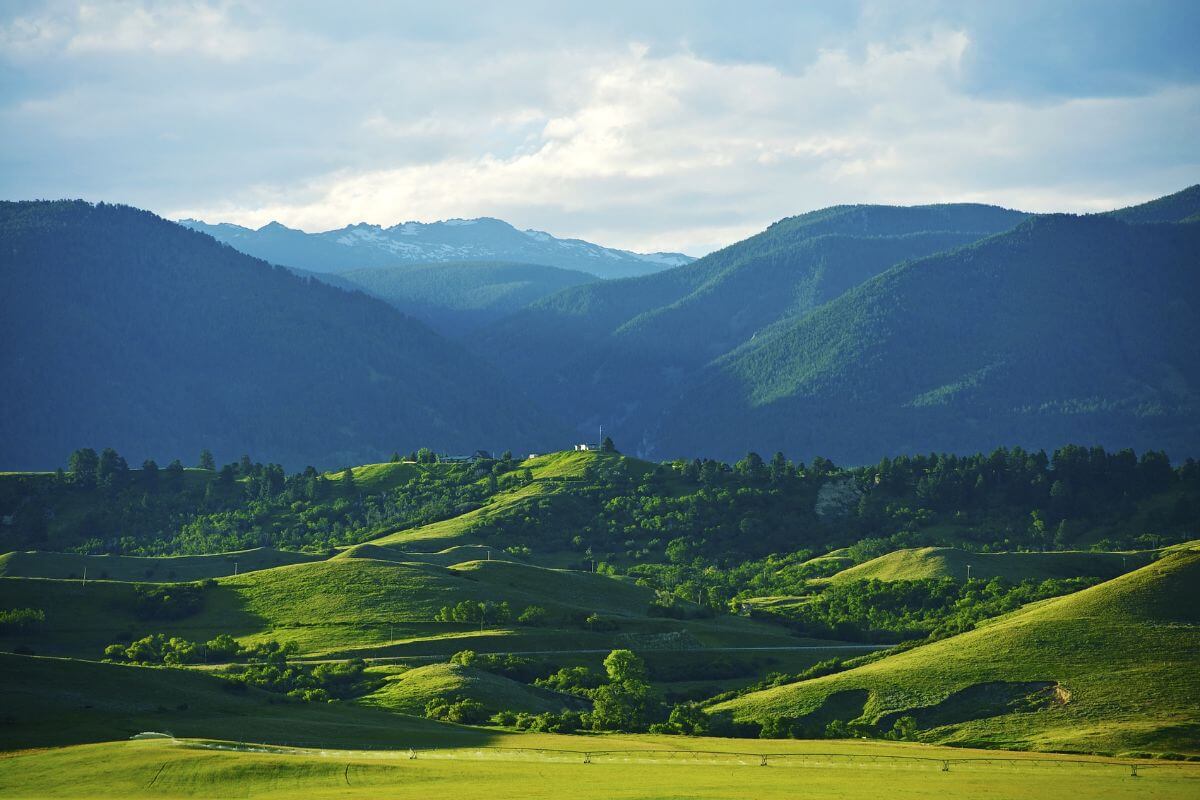
Montana boasts an impressive 30 million acres of public land access, administered primarily by the U.S. Forest Service and the Bureau of Land Management (BLM). The combination of federal and state agencies in the state offers a treasure trove of hunting opportunities for various game animals such as elk and deer.
Public land hunting in Montana offers a meld of freedom and excitement, but it also demands a unique level of preparedness and respect. Without a landowner at your disposal, the state’s public lands are yours for hunting, but only if you play by the rules and respect the wildlife and nature that call these landscapes home.
1. Montana State Lands
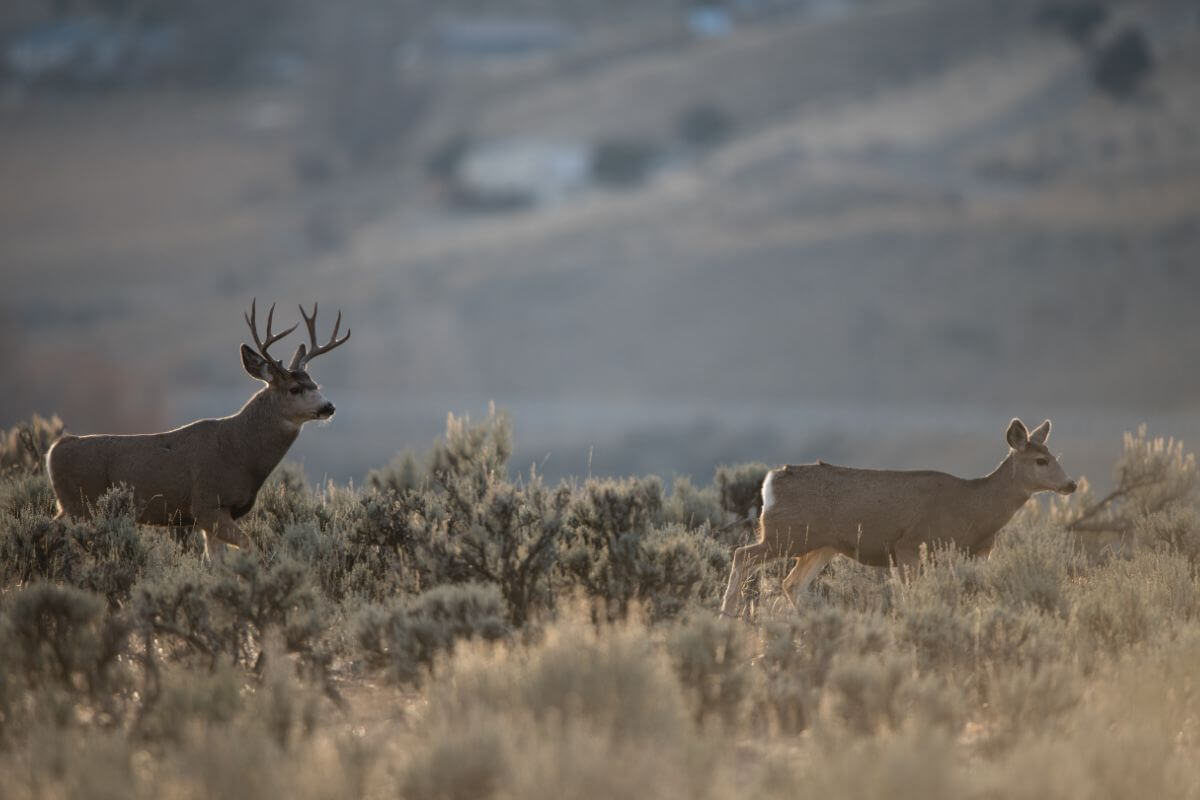
When it comes to Montanan hunting grounds, the state’s landscape offers you a whopping 5.5 million acres of state school trust lands. Imagine the endless trails awaiting your exploration!
The Department of Natural Resources and Conservation (DNRC) oversees the management of these lands, utilizing the revenue generated from their use to provide support for public schools in Montana.
Here are some nitty-gritty details to keep in mind when hunting in Montana state lands:
- Accessible State Trust Land – Most state land boundaries are not marked, and many are unfenced. Consult BLM or USFS maps for land ownership patterns, or better yet, have a friendly chat with adjacent landowners to clarify boundary locations.
- Licensed Hunting – Your ticket to recreational heaven, the State Recreational Use License, is available where you’d buy your hunting gear. This opens doors, or should I say, gates, to your state trust land adventures.
- Dispersed Hunting – Love the idea of an unscripted hunting day? Good news – dispersed hunting is A-okay with your handy conservation license from FWP.
- Land Access Etiquette – Always secure permission before crossing any private land to access state or federal lands. No one has time for upset private landowners.
- Not Just for Hunting – Non-commercial activities like hiking or day horseback use are applicable here, but you’ll need a State Land Recreation Use Permit. Looking for some overnight horseback use? A Special Recreational Use License available from all license agents will be your best friend.
- Play By The Rules – FWP game wardens are the referees here. Not only do they ensure guidelines for hunting are followed, but they’re also the enforcers when it comes to recreational opportunities on state trust lands.
- Wheels (and Hooves) on the Road – Motorized vehicles have to stick to the rule book too. They are restricted to certain roads – federal, state, dedicated county roads, or county maintenance-approved paths.
Let’s not forget that the magic of Montana hunting isn’t just about what you catch, but also the windswept journey you take to get there.
2. Montana FWP Lands
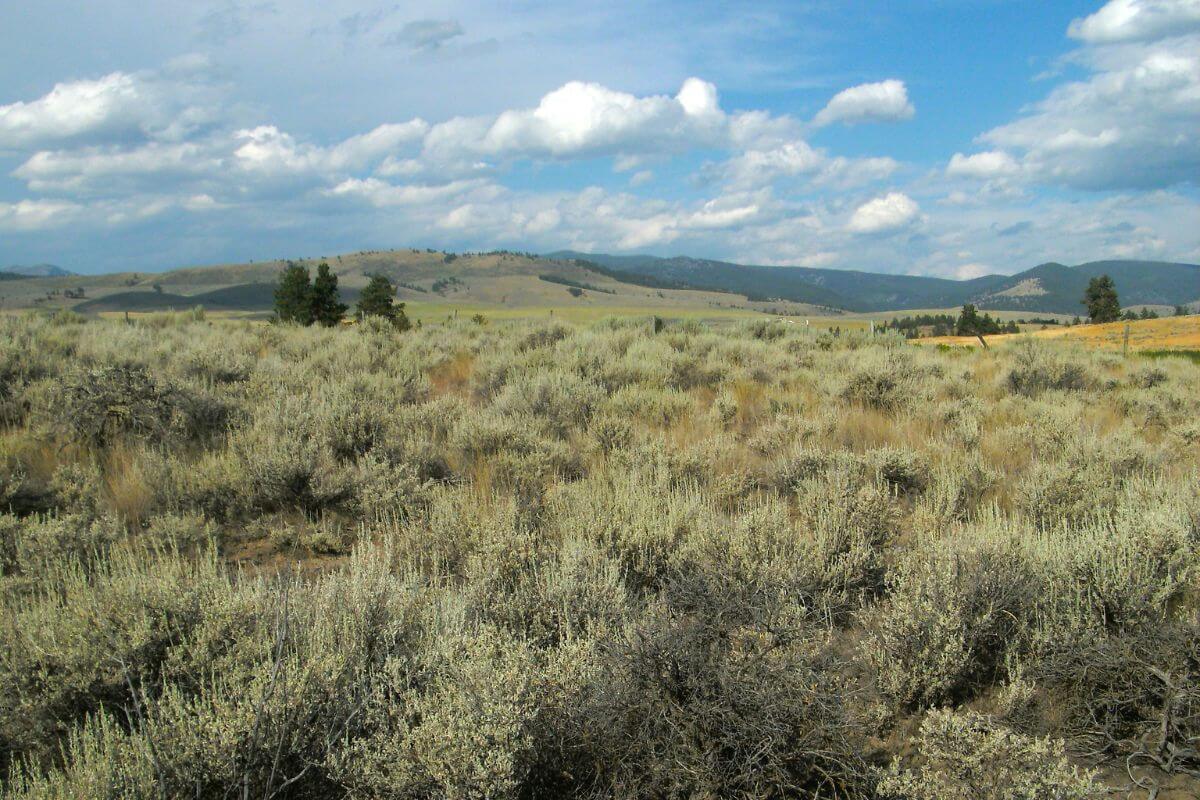
The wide expanses of Montana offer sportsmen multiple options for hunting. Montana Wildlife Management Areas (WMA), managed by the Montana Fish, Wildlife & Parks (FWP), are one such resource that provides diverse hunting scenarios.
Whether you’re after a big game or small, these lands are a hunter’s playground. Here’s what WMAs offer:
- Varied, often pristine environments.
- Free public hunting opportunities.
- Seasonal limitations for hunting.
- Open to both residents and nonresidents (with the right licenses and permits).
Another option under the FWP purview, Montana’s Fishing Access Sites (FAS), extends beyond just avid anglers. Though primarily designed for fishing, some of these sites also welcome hunting.
Being able to switch between casting for trout and tracking deer on the same day, here is what you should expect at Montana FAS:
- FWP-managed statewide for stream and lake access.
- Some sites allow for hunting as well.
- Provide an interesting blend of recreational activities.
- Open to both residents and nonresidents (with valid hunting permits).
To make the most of hunting on these FWP lands, familiarize yourself with the local regulations, including bag limits, permissible hunting methods, and specific seasons for various games.
Not only does this knowledge help in successful hunts, but it also aids in the long-term preservation of these pristine environments for generations of hunters to come.
3. Montana Federal Lands
When you’re eager to venture into Montana’s wild landscape, your ticket to the great outdoors might just be the sprawling federal lands that make up over one-third of the state. Here’s the lowdown on the different federal land categories you can explore for public hunting in Montana:
| Types of Federal Land | Land Area | Accessibility | Hunting Rules |
| National Forest Lands | 16 million acres | Accessible via public road, navigable waterway, or adjacent land | Mostly open, but consult local regulations |
| BLM Lands | 8 million acres | Accessible via public road, navigable waterway, or adjacent land | Open to hunting inaccessible areas |
| National Refuges and Waterfowl Production Areas | Varies | Regulations by area, hunting periods | Open some portion of the season, contact refuge personnel before hunting |
| U.S. Bureau of Reclamation Lands | 200,000 acres of land, 100,000 acres of surface water | Open on legally accessible public grounds | Open where legal, consult local regulations |
- National Forest Lands – Montana’s national forests offer a hunting haven for those who love the thrill of the chase. The general rule is that if you can get there legally, you can hunt there. Just ensure you’re clued into the specific hunting season regulations for your chosen area.
- BLM Lands – Managed by the Bureau of Land Management, these lands primarily consist of range land. However, they also include some forested territories that are open to public hunting. As with national forest lands, if you’re legally accessing these areas, you’re good to go.
- National Refuges and Waterfowl Production Areas – Some of the 10 national wildlife refuges managed by the U.S. Fish & Wildlife Service allow hunting during specific seasons. It’s important to contact refuge personnel to make sure you follow all rules. The waterfowl production areas are great for hunting waterfowl, upland birds, and some limited big game.
- U.S. Bureau of Reclamation Lands – Administered by the U.S. Bureau of Reclamation, these lands provide additional opportunities for hunting, fishing, and outdoor recreation. During your exploration, you can hunt where there is legal public access.
The beauty of federal lands is that they embrace Mother Nature’s bounty on a grand scale, meaning that if you equip yourself with the right maps, travel plan, and a suitable hunting license, you’re in for a treat. So gear up, mind the local regulations, and let the hunt begin!
4. Montana State Parks
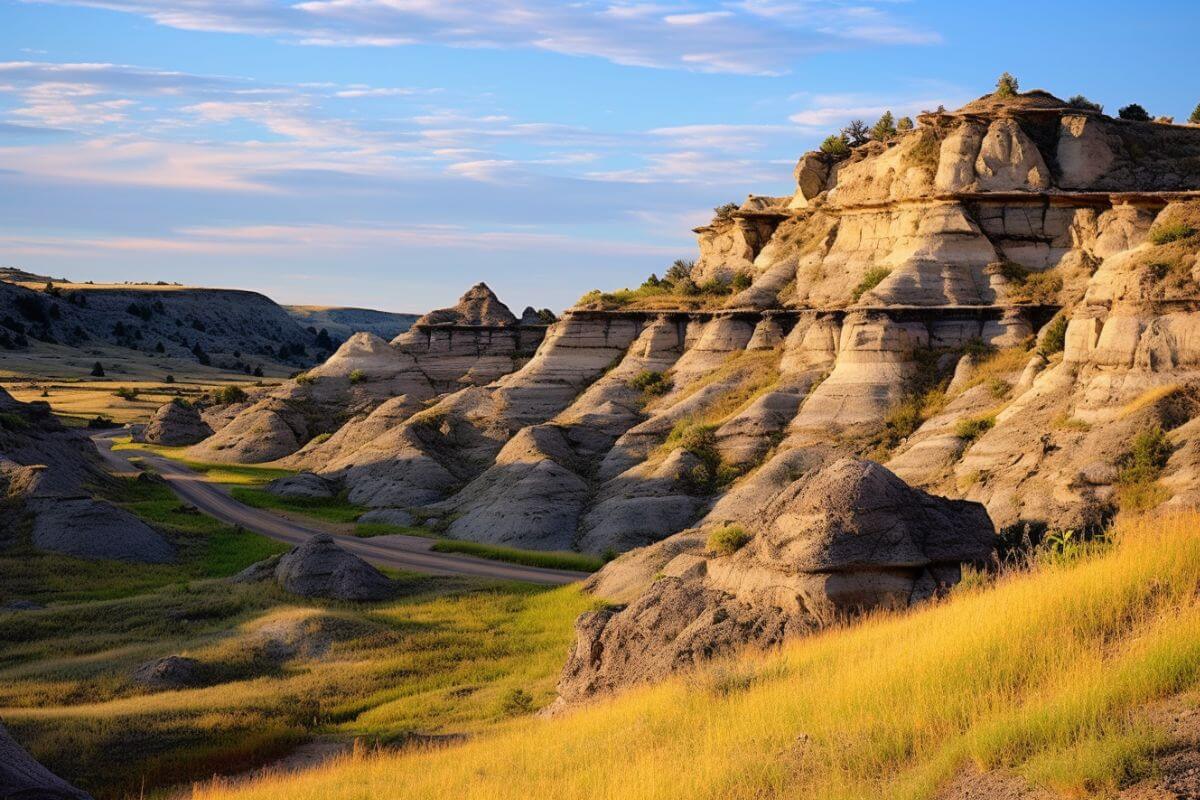
Montana’s State Parks are rich with both natural beauty and cultural significance, offering a tapestry of environments that cater to a wide range of outdoor enthusiasts. While many parks focus on preserving nature and providing educational experiences, some also permit hunting under strict rules, and hunting regulations.
Here’s a glance at Montana’s hunting-friendly State Parks amid their diverse offerings:
- Brush Lake State Park – White Sandy Beaches and Grass Fields
- Cooney State Park – A Haven for Anglers and Water-sport Enthusiasts
- Fish Creek State Park – An Expansive Natural Wonderland in Western Montana
- Lewis & Clark Caverns State Park – The Lure of Limestone Caverns
- Makoshika State Park – Explore the Fossil-rich Badlands
- Medicine Rocks State Park – A Sacred Site Offering Tranquility and Wildlife Sights
- Pirogue Island State Park – A Wildlife Haven on the Yellowstone River
- Rosebud Battlefield State Park – A Glimpse into History on Montana’s Eastern Prairie
- Sluice Boxes State Park – A Photographer’s Paradise with Historic Flare
If you’re considering hunting on Montana State Park lands, it’s important to review the specific regulations for each park. For instance, you might find that some parks only allow bow hunting, while others further restrict hunting to specific seasons or designated areas.
Remember that these parks exist not just for hunting, but also to provide a home for wildlife and an opportunity for everyone to appreciate Montana’s natural and historical riches. Always practice responsible and respectful hunting to protect these lands for future generations.
Montana Private Land Hunting

In the private hunting scene of Montana where thoughtful interactions with nearly 23,000 landowners who own 64 million acres, can open up other more exclusive hunting opportunities. But, it is a privilege that comes with its own set of rules.
Acknowledging private property rights is crucial; however, hunting on private lands can be an intimate and rewarding experience. Be mindful and considerate, and you might just find an open-minded landowner willing to share their piece of wilderness with you.
Block Management Program
One of the best-kept secrets in Montana’s hunting landscape is the Block Management Program. It’s a cooperative effort between private land owners and Montana Fish, Wildlife & Parks (FWP) that opens up an expansive sprawl of private lands for hunting, often even giving access to neighboring public lands.
Did I mention this is all free? You can thank the landowners and FWP for being sporting about it. This program helps landowners control hunting traffic, and for you, it’s like unlocking an otherwise off-limits treasure trove.
Each region offers unique hunting opportunities, from mountain grouse in the dense conifer forests of Northwest Montana to antelope and big horn sheep in the picturesque valleys and foothills of the western side. You’ll even find bird hunting options that rival those in well-known destinations.
Here’s a peek at the Block Management regions, their key features, and available games:
| Block Management Region | Key Features | Game Animals |
| Region 1 (Northwest Montana) | Dense conifer forest habitat | Elk, deer, moose, black bear, wolf, turkey, and waterfowl |
| Region 2 (Western Montana) | Mountains, valleys, and foothills | Deer, elk, black bear, moose, wolf, mountain grouse, turkey, waterfowl, antelope, and big horn sheep |
| Region 3 (Southwest Montana) | Approximately 60% of the land within the region is public land | Deer, antelope, upland birds, moose, elk, and waterfowl |
| Region 4 (North Central Montana) | An acre hunting property of over 1.3 million | Upland birds, migratory birds, black bears, bighorn sheep, moose, and mountain goats |
| Region 5 (South Central Montana) | Flexibility in gaining permission | Antelope, deer, upland birds |
| Region 6 (Northeast Montana) | Enhanced hunting access to well over 700,000 public acres of land | Whitetail and mule deer, elk, antelope, upland game birds, turkey, and waterfowl |
| Region 7 (Southeast Montana) | Supports populations of 6 species of upland birds and a variety of waterfowl | Antelope, elk, deer, upland game birds, waterfowl. |
Remember, as a guest on these generous private lands, it’s vital to respect not only the hunting rules but also the broader environment. Clean up after yourself, steer clear of off-limit areas with private signs, and if you ever have the chance, give a nod of gratitude to the landowners who share their landscapes with you.
Permission Tips to Hunt on Montana Private Lands
The relationships you build with private landowners can become the velvet rope getting you into some of the best hunting spots in Montana. More than just knocking on a door, it’s about respect, courtesy, and a bit of good ol’ small-town charm.
Here’s a bulletproof plan to score hunting permissions on private lands:
- Make the Call – Don’t just show up – respect their time. Better yet, call well in advance. The 15 minutes you think you’re saving with a surprise visit can easily turn into a hunting season locked-out.
- Bring the Deets – Your landowner wants to know who’s trampling on their property. Offer comprehensive information about yourself, your buddies, your vehicles, and your dogs (if applicable).
- Ask the Right Questions – Is this land prime for bird, deer, or elk hunting? What areas are off-limits? Are there any other hunters scheduled? The more you know, the smoother and more productive your hunting experience will be.
- Obey the Rules – If the landowner says no hounds or no tree stands, you better stick to it. It’s their land; you’re just a visitor.
- Show Your Gratitude – A handshake isn’t enough. Think of sending a ‘thank you’ card as a long-term investment. It shows you’re respectful and appreciative, and hey, if you send a pic of your successful hunt, it might just brighten their day.
Respect, information, and gratitude – these are your golden tickets to fruitful hunts on Montana’s private properties. Let’s call it the “Good Neighbor Strategy.”
And sometimes, you might just hit it off with a landowner who gives you recurring access to their land, turning a polite exchange into a valuable relationship. After all, the best way to secure future hunting seasons is to leave a trail of respect in your wake.
Can You Hunt on Montana State Land Final Thoughts
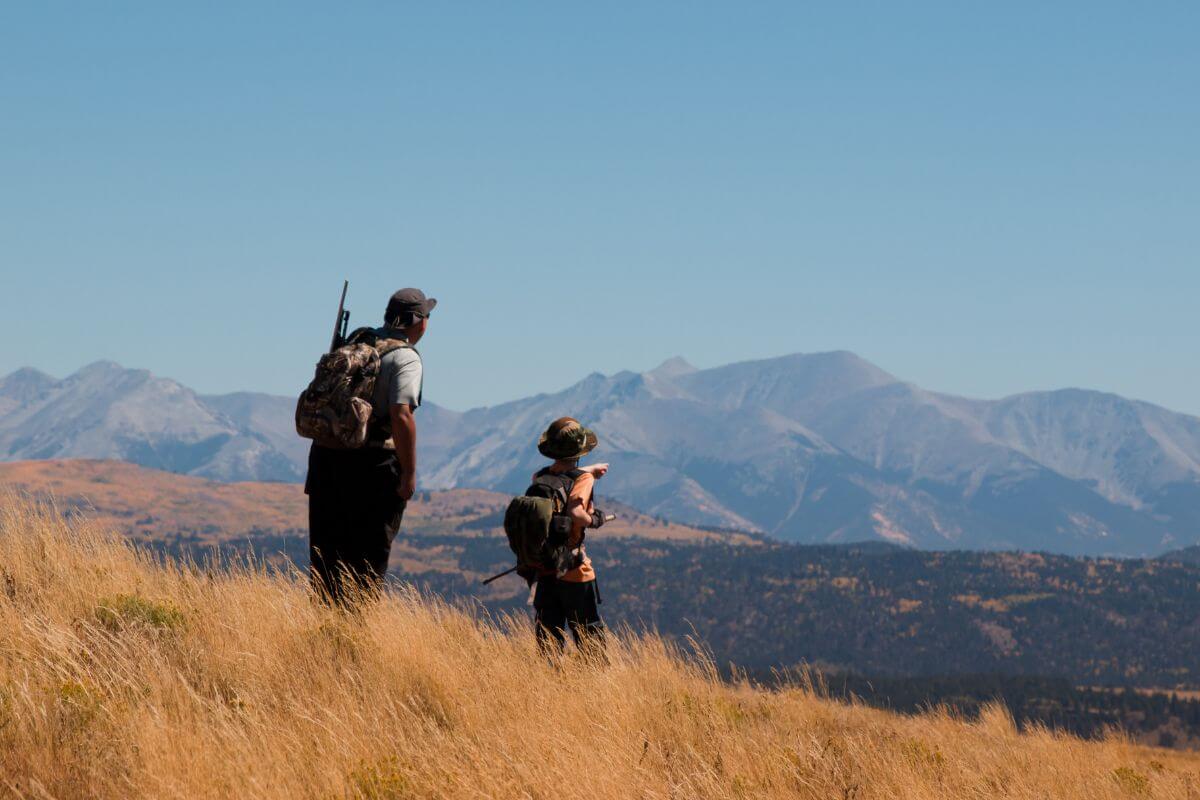
In the vast expanse of Montana’s untamed wilderness, both public and private lands offer a generous playground for hunting enthusiasts seeking adventure. With over 30 million acres to explore, managed by a blend of federal and state agencies, the opportunities are as diverse as the landscapes themselves.
Key to your hunting success will be a blend of preparation, respect, and a dash of legal permission. Whether you’re drawn to the curated experiences of the Block Management Program’s private land hunts or the free-spirited allure of Montana’s state and federal parks, each hunting opportunity offers its unique charm, ready to be discovered.
So, don the bright orange vest, lace up those hunting boots, and prepare for an unforgettable journey into the heart of Montana’s wild frontier. And as you roam these hunting grounds, remember to tread lightly, play by the rules, and leave only footprints as you connect with the natural splendor that’s waiting to be explored under Montana’s big, breathtaking sky.
Can You Hunt on Montana State Land FAQs
1. Can You Shoot on Montana State Land?
In Montana, shooting on state-owned lands is generally allowed, but it’s crucial to follow state regulations and guidelines. It’s essential to check specific rules and restrictions set by the Montana Fish, Wildlife & Parks to ensure compliance with safety and environmental considerations while shooting on state land.
2. Can You Hunt in Montana State Parks?
There are some Montana State Parks, such as Makoshika and Medicine Rocks, that allow hunting, but it’s crucial to adhere to the regulations outlined by each specific state park to ensure a safe and responsible experience.
3. How Many Acres Do You Need to Hunt in Montana?
Landowners in Montana who want to have preference when applying for a deer hunting permit must own a minimum of 160 acres of connected land that is mostly used for agricultural purposes in the hunting district they want to apply for.
4. Can Out-of-State Residents Hunt in Montana?
Out-of-state residents can hunt in Montana by obtaining the required licenses and permits. The cost of hunting licenses for non-residents is typically higher than for Montana residents, and specific regulations and seasons apply.
5. Can You Hunt Wilderness Areas in Montana?
Hunting is generally allowed in designated wilderness areas in Montana. However, hunters should be aware of specific regulations and restrictions, as well as seasonal closures, to ensure compliance with the guidelines for each wilderness area.
Craving more Montana adventures? These articles are your ticket to continued exploration:
- DIY Montana Hunting
- Montana Antelope Hunting
- Hunting Bears in Montana
- Hunt Buffalo in Montana
- Montana OTC Bighorn Sheep Hunting Trip
- https://fwp.mt.gov/hunt/access/public-lands
- https://fwp.mt.gov/hunt/access/private-lands
- https://fwp.mt.gov/hunt/access/blockmanagement
- https://fwp.mt.gov/stateparks/find-a-park
- https://dnrc.mt.gov/TrustLand/public-use/HuntingandFishing
- https://fwp.mt.gov/binaries/content/assets/fwp/hunt/access/block-management/2023-fwpblockmanegment.pdf

